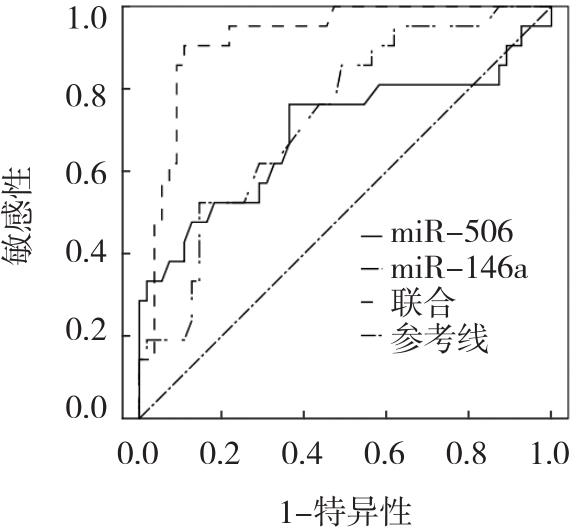| 血清microRNA-506、microRNA-146a对急性淋巴细胞白血病患儿预后不良的预测价值研究 |
| |
| 作者姓名: | 陈雨华 高蕾 孙果 包鸿 |
| |
| 作者单位: | 1.江南大学附属儿童医院,检验科,江苏 无锡 214000;2.江南大学附属儿童医院,儿血液科,江苏 无锡 214000 |
| |
| 基金项目: | 江苏省基础研究计划(青年基金)项目(No:BK20210081) |
| |
| 摘 要: | 
目的 探讨血清microRNA-506(miR-506)联合microRNA-146a(miR-146a)对急性淋巴细胞白血病(ALL)患儿预后不良的预测价值。方法 随机选取江南大学附属儿童医院2020年4月—2022年4月收治的76例ALL患儿为研究组,同时选取同期在本院体检的健康儿童80例为对照组。检测并比较所有儿童血清miR-506、miR-146a表达。对研究组患儿进行规范化治疗,并进行为期1年的随访,记录患儿的预后情况,比较不同预后患儿血清miR-506、miR-146a表达。采用多因素逐步Logistic回归模型分析影响患儿预后的危险因素;绘制受试者工作特征(ROC)曲线分析miR-506联合miR-146a对患儿预后的预测价值。结果 研究组miR-506、miR-146a mRNA相对表达量高于对照组(P<0.05)。ALL患儿预后不良发生率为27.63%(21/76)。预后不良患儿miR-506、miR-146a mRNA相对表达量高于预后良好患儿(P<0.05)。预后不良与预后良好患儿的性别、年龄、体质量指数、免疫分型比较,差异均无统计学意义(P>0...
|
| 关 键 词: | 急性淋巴细胞白血病 儿童 microRNA-506 microRNA-146a 预后不良 预测价值 |
| 收稿时间: | 2023-05-24 |
|
| 点击此处可从《中国现代医学杂志》浏览原始摘要信息 |
|
点击此处可从《中国现代医学杂志》下载免费的PDF全文 |
|

